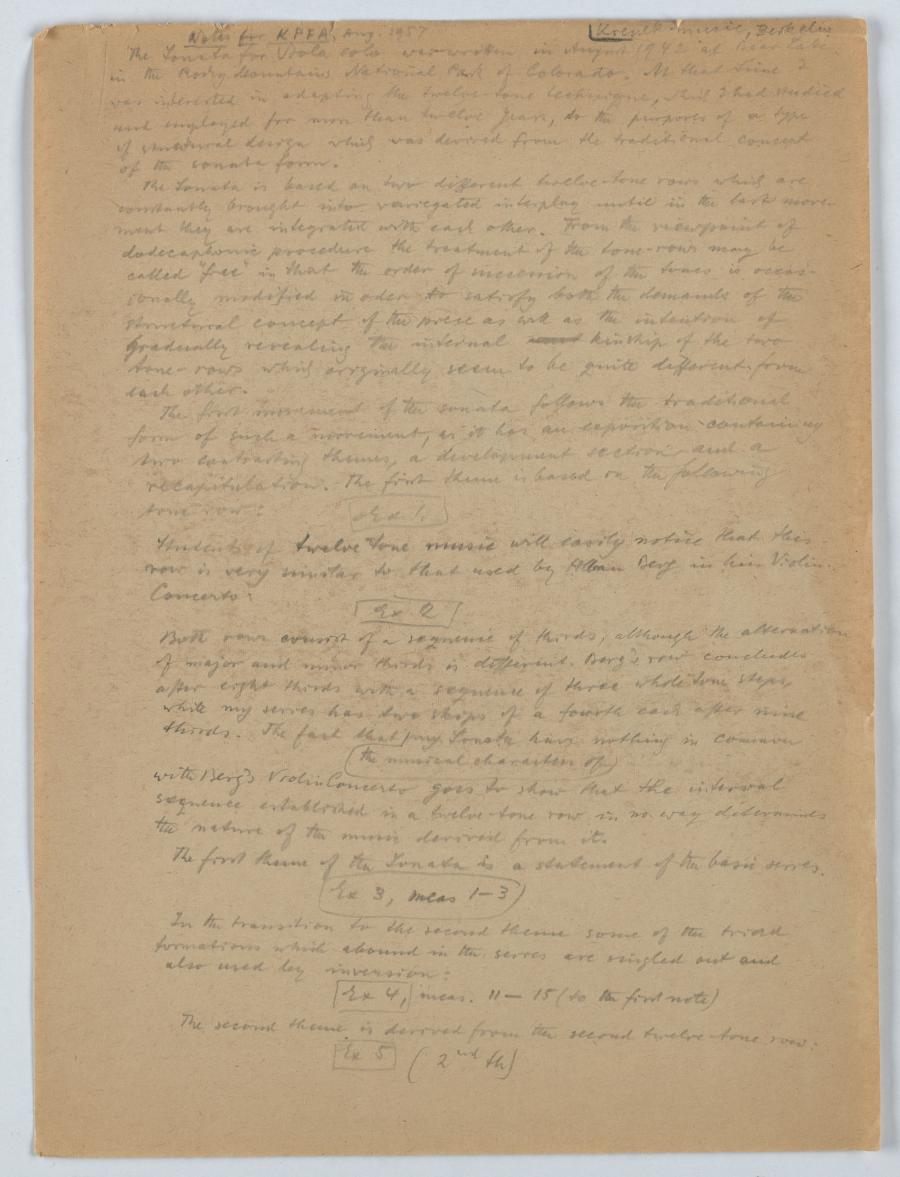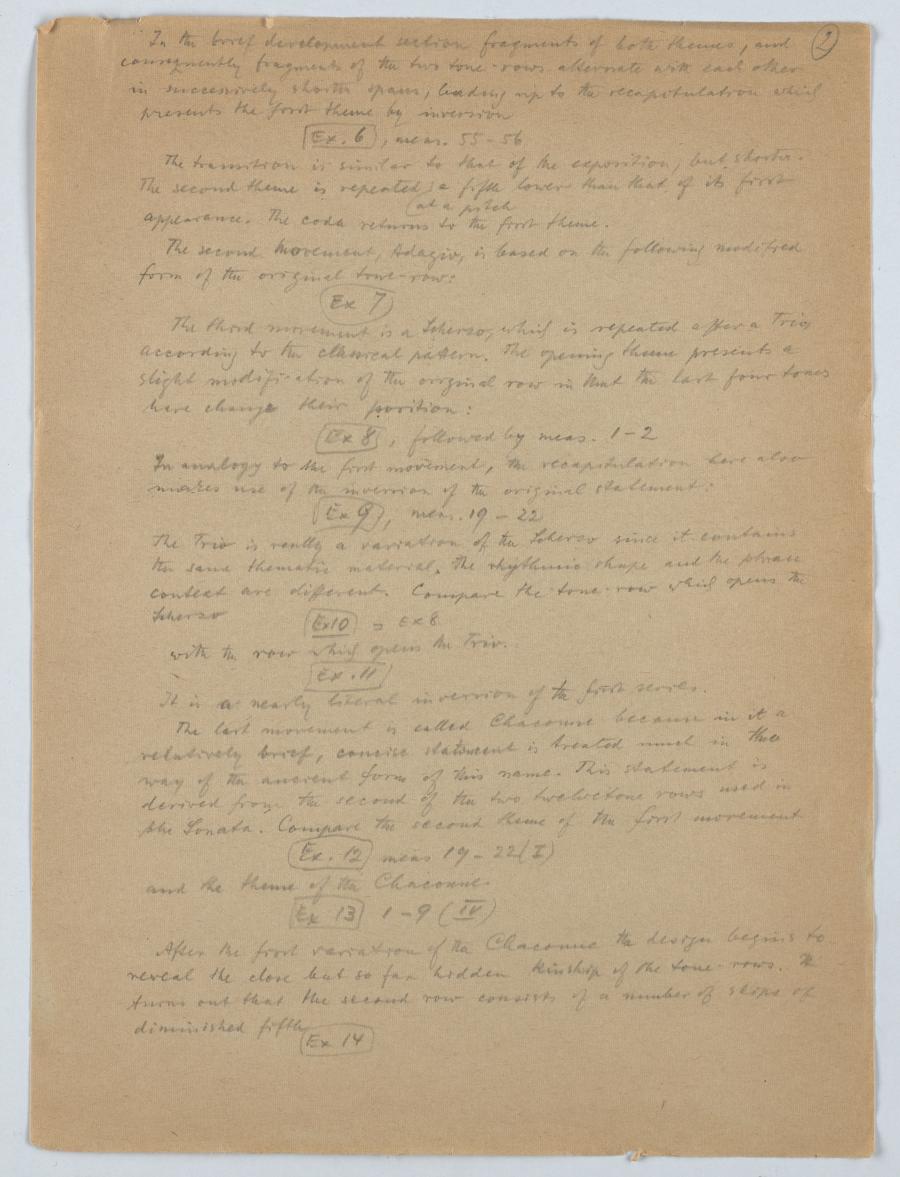Krenek music, Berkeley
Abstract
Für den liberalen, überwiegend durch Freiwilligenarbeit getragenen kalifornischen Radiosender KPFA analysierte Krenek die Anwendung der Zwölftontechnik in seiner Sonate für Viola solo, op. 92, Nr. 3.
The
The
The first movment of the sonata follows the traditional
form of such a movement, as it has an exposition containing
two contrasting themes, a development section, and a
recapitulation. The first theme is based on the following
tone row:
Ex. 1
Students of twelve tone music will easily notice that this
row is very similar to that used by Ex 2
Both rows consist of a sequence of thirds, although the alternation
of major and minor third is different. Ex 3, meas 1-3
In the transition to the second theme some of the triad
formations which abound in the series are singled out and
also used by inversion:
Ex 4, meas. 11-15 (to the first note)
The second theme is derived from the second twelve tone row:
Ex 5
(2nd th)
2
In the brief development section fragments of both themes, and
consequently fragments of the two tone-rows alternate with each other
in successively shorter spans, leading up to the recapitulation which
presents the first theme by inversion
Ex. 6, meas. 55 - 56
The transition is similar to that of the exposition, but shorter.
The second theme is
The second movement, Adagio, is based on the following modified
form of the original tone-row:
Ex 7
The third movement is a Scherzo, which is repeated after a Trio,
according to the classical pattern. The opening theme presents a
slight modification of the original row in that the last four tones
here change their position:
Ex 8, followed by meas. 1-2
In analogy to the first movement, the recapitulation here also
makes use of the inversion of the original statement:
Ex 9, meas. 19 - 22
The Trio is really a variation of the Scherzo since it contains
the same thematic material. The rhythmic shape and the phrase
context are different. Compare the tone-row which opens the
Scherzo
Ex10 = Ex 8
with the row which opens the Trio.
Ex. 11
It is a nearly literal inversion of the first series.
The last movement is called Chaconne because in it a
relatively brief, concise statement is treated much in the
way of the ancient form of this name. This statement is
derived from the second of the two twelvetone rows used in
the Ex. 12 meas 19 - 22 (I)
and the theme of the Chaconne.
Ex 13 1-9 ( IV)
After the first variation of the Chaconne the design begins to
reveal the close but so far hidden kinship of the tone-rows. It
turns out that the second row consists of a number of skips of
diminished fifth
Ex 14
3
When the thirds missing within the diminished fifths are filled in,
we obtain a series of thirds very similar to the arrangement of
our first tone-row.
Ex. 15
The three tones attached to the string of thirds
Ex 16
have an intervallic relation very similar to that of the group which
concluded the first tone-row.
Ex. 17
The group is always used as a sort of punctuation sign
separating the variations of the Chaconne. There are eight such
variations. The last variation leads Ex 18 meas. 62 - 67 (IV)


